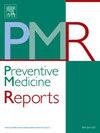Evaluating the burden of occupational asthma among individuals aged 15 and older in India: A comprehensive study on mortality and disability-adjusted life years
IF 2.4
3区 医学
Q2 PUBLIC, ENVIRONMENTAL & OCCUPATIONAL HEALTH
引用次数: 0
Abstract
Objective
Occupational asthma has become one of the most common occupational lung diseases, and its burden in India is underestimated.
Methods
This study analyzed mortality and disability-adjusted life years (DALYs) caused by occupational asthma in India from 1990 to 2021 using data from the global burden of disease 2021. Data were categorized by sex, region, and age group, with age-standardized mortality rates (ASMR) and age-standardized DALYs rates (ASDR) as primary indicators to compare trends over time and across regions.
Results
According to Global Burden of Disease 2021 estimates, there were a total of 11,575.6 deaths in India attributed to occupational asthma (95 % uncertainty interval, 7949.1–22,361), representing a 7.5 % increase since 1990. However, ASMR and ASDR showed significant declines across all sexes compared to 1990, with reductions of 55.9 % and 54.8 %, respectively. Geographically, the highest burden of occupational asthma was observed in Uttar Pradesh, while Goa had the lowest. In terms of sex, the burden of mortality and disability was notably higher among males, particularly within the 15–64 age group. In 2021, the burden across all age groups was primarily driven by years of life lost.
Conclusions
While the overall burden of mortality due to occupational asthma continues to rise in India, ASMR and ASDR have declined. However, certain regions and demographic groups, especially Uttar Pradesh and the male population, continue to bear a disproportionate share of the burden. These findings underscore the critical need for targeted prevention and control measures for occupational asthma in India.
评估印度15岁及以上个体职业性哮喘的负担:一项关于死亡率和残疾调整生命年的综合研究
目的职业性哮喘已成为印度最常见的职业性肺病之一,其负担被低估。方法本研究使用2021年全球疾病负担的数据,分析了1990年至2021年印度职业性哮喘引起的死亡率和残疾调整生命年(DALYs)。数据按性别、地区和年龄组分类,以年龄标准化死亡率(ASMR)和年龄标准化DALYs率(ASDR)作为主要指标,比较各时期和各地区的趋势。结果根据《2021年全球疾病负担》的估计,印度共有11,575.6人死于职业性哮喘(95%不确定区间为7949.1-22,361),自1990年以来增加了7.5%。然而,与1990年相比,ASMR和ASDR在所有性别中都出现了显著下降,分别下降了55.9%和54.8%。从地理上看,职业性哮喘负担最重的是北方邦,而最低的是果阿邦。就性别而言,男性的死亡和残疾负担明显较高,特别是在15-64岁年龄组。2021年,所有年龄组的负担主要是由寿命减少造成的。结论:在印度,职业性哮喘死亡率总体负担持续上升,但ASMR和ASDR有所下降。然而,某些地区和人口群体,特别是北方邦和男性人口,继续承担着不成比例的负担。这些发现强调了印度对职业性哮喘采取有针对性的预防和控制措施的迫切需要。
本文章由计算机程序翻译,如有差异,请以英文原文为准。
求助全文
约1分钟内获得全文
求助全文
来源期刊

Preventive Medicine Reports
Medicine-Public Health, Environmental and Occupational Health
CiteScore
3.90
自引率
0.00%
发文量
353
 求助内容:
求助内容: 应助结果提醒方式:
应助结果提醒方式:


